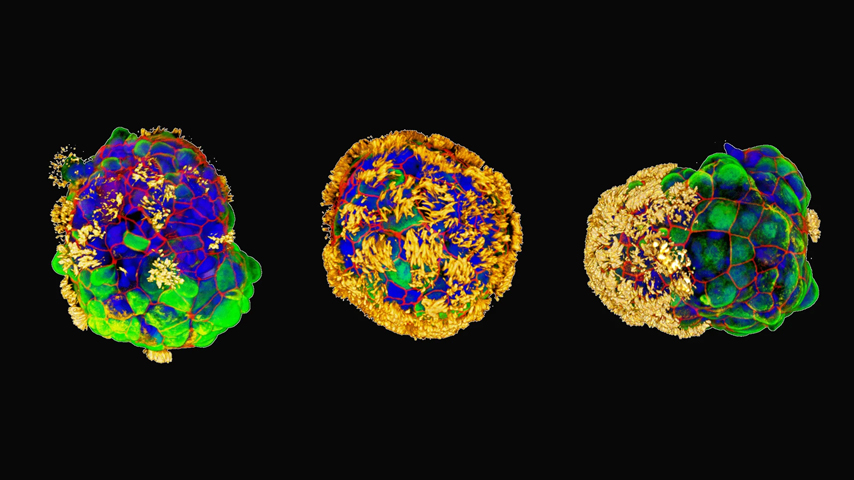Special Journal Section on Mobile Robots and Unmanned Ground Vehicles
Special Journal Section on Mobile Robots and Unmanned Ground Vehicles


The ASME Journal of Mechanisms and Robotics is currently accepting manuscripts for a special section focusing on the topic “Mobile Robots and Unmanned Ground Vehicles.” Authors who are interested in having their manuscripts included in the special section, to be published online by June 1, 2021, should submit their manuscripts by January 15, 2021.
This special section is intended to provide a platform for sharing and presenting new research and solutions for Mobile Robots (MRs) and Unmanned Ground Vehicles (UGVs) in field and service applications. In the last few years, the adoption of field robotics has rapidly increased, with many notable examples developed and validated for operations on the ground (of Earth or planets), under the ground, underwater, in the air, or in space. Applications range from agriculture, mining, surveillance, and environmental monitoring, to search and rescue and disaster relief, planetary exploration, and nuclear power plant operations.
Service robots can assist and replace human operators in many dangerous or repetitive tasks, or be used for entertainment, healthcare, and household tasks. They can also be useful for mitigation measures during pandemic-related crises. In this respect, service robots can serve not only as healthcare agents for assistive tasks in hospital and care homes, but also to maintain social distancing.
To effectively operate in their working environments, many challenges need to be tackled and addressed. For example, when operations on uncharted highly irregular terrain are required, an appropriate choice and functional design of the locomotion system is critical. Many options have been investigated, including passive/active articulated suspension systems for wheeled robots, articulated tracked vehicles, and hybrid solutions. Biologically inspired locomotion systems are also notable examples.
Robots are also required to interact with the surrounding environment via mobile manipulators that bring dedicated tools or sensors for proximity measurements. Safe collaborative behaviors are often implemented with human operators or other robotic co-workers.
A service/field robot operates with a high degree of autonomy based on an inbuilt control system that the operator can manually override when required. Navigation strategies are also important especially when long-distance and long-duration missions are involved. In this respect, the adoption of sustainable solutions and renewable energies can increase autonomy. Environment planners can help to develop safe and energy efficient paths towards the intended goal.
For a systematic and comparative analysis of field and service robots, it is important to provide quantitative measures of their performance in the field in terms of traction, climbing and traversability, safety and stability, power consumption, autonomy, and reliance on human supervision. This aspect also calls for the investigation of physics-based multi-body models that capture with high-fidelity the dynamic response of robots, considering the interaction with the operating environment. That can be useful during the design and development stages before field validation of the system.
The effort is inspired by the fifth-year anniversary celebration for the section on Mobile Robots and Unmanned Ground Vehicles at the International Mechanical Engineering Congress & Exposition (IMECE 2020). However, it is noted that extended manuscripts of conference papers published elsewhere (including other ASME conferences) that fit the scope of this focused section are invited.
Focused section manuscript submissions are welcome on topics related to aspects of theory, design, and application, including (but not limited to) agricultural robots; biologically inspired systems and solutions; hybrid and novel locomotion systems; planetary exploration; medical and healthcare robots, with emphasis on the current COVID-19 pandemic; service robots and unconventional applications; mobile manipulation; human-mobile robot collaboration; and long-distance, long-duration missions.
Manuscripts should be submitted electronically to the journal by January 15, 2021, via Journals Connect at journaltool.asme.org. Authors who have an account should log in and select “Submit Paper” at the bottom of the page. Authors without an account should select “Submissions” and follow the steps. At the Paper Submittal page, authors should select “ASME Journal of Mechanisms and Robotics” and then select the special section “Mobile Robots and Unmanned Ground Vehicles.” Manuscripts that do not complete the review process within this timeframe, or that are outside the scope of the focused section, may be considered for publication in a regular issue of the journal.
The special section editors are Giuseppe Quaglia, PhD, Department of Mechanical and Aerospace Engineering, Politecnico di Torino, Torino, Italy, giuseppe.quaglia@polito.it; Renato Vidoni, PhD, Faculty of Science and Technology, Free University of Bozen-Bolzano, Bolzano, Italy, renato.vidoni@unibz.it; Giulio Reina, PhD, Department of Mechanics, Mathematics and Management, Politecnico di Bari, Bari, Italy, giulio.reina@poliba.it; and Tuhin Das, PhD, Department of Mechanical and Aerospace Engineering, University of Central Florida, Orlando, USA, tuhin.das@ucf.edu.
For more information on the ASME Journal of Mechanisms and Robotics, visit https://asmedigitalcollection.asme.org/mechanismsrobotics. To learn more about the ASME Journal Program, visit www.asme.org/publications-submissions/journals/information-for-authors.
This special section is intended to provide a platform for sharing and presenting new research and solutions for Mobile Robots (MRs) and Unmanned Ground Vehicles (UGVs) in field and service applications. In the last few years, the adoption of field robotics has rapidly increased, with many notable examples developed and validated for operations on the ground (of Earth or planets), under the ground, underwater, in the air, or in space. Applications range from agriculture, mining, surveillance, and environmental monitoring, to search and rescue and disaster relief, planetary exploration, and nuclear power plant operations.
Service robots can assist and replace human operators in many dangerous or repetitive tasks, or be used for entertainment, healthcare, and household tasks. They can also be useful for mitigation measures during pandemic-related crises. In this respect, service robots can serve not only as healthcare agents for assistive tasks in hospital and care homes, but also to maintain social distancing.
To effectively operate in their working environments, many challenges need to be tackled and addressed. For example, when operations on uncharted highly irregular terrain are required, an appropriate choice and functional design of the locomotion system is critical. Many options have been investigated, including passive/active articulated suspension systems for wheeled robots, articulated tracked vehicles, and hybrid solutions. Biologically inspired locomotion systems are also notable examples.
Robots are also required to interact with the surrounding environment via mobile manipulators that bring dedicated tools or sensors for proximity measurements. Safe collaborative behaviors are often implemented with human operators or other robotic co-workers.
A service/field robot operates with a high degree of autonomy based on an inbuilt control system that the operator can manually override when required. Navigation strategies are also important especially when long-distance and long-duration missions are involved. In this respect, the adoption of sustainable solutions and renewable energies can increase autonomy. Environment planners can help to develop safe and energy efficient paths towards the intended goal.
For a systematic and comparative analysis of field and service robots, it is important to provide quantitative measures of their performance in the field in terms of traction, climbing and traversability, safety and stability, power consumption, autonomy, and reliance on human supervision. This aspect also calls for the investigation of physics-based multi-body models that capture with high-fidelity the dynamic response of robots, considering the interaction with the operating environment. That can be useful during the design and development stages before field validation of the system.
The effort is inspired by the fifth-year anniversary celebration for the section on Mobile Robots and Unmanned Ground Vehicles at the International Mechanical Engineering Congress & Exposition (IMECE 2020). However, it is noted that extended manuscripts of conference papers published elsewhere (including other ASME conferences) that fit the scope of this focused section are invited.
Focused section manuscript submissions are welcome on topics related to aspects of theory, design, and application, including (but not limited to) agricultural robots; biologically inspired systems and solutions; hybrid and novel locomotion systems; planetary exploration; medical and healthcare robots, with emphasis on the current COVID-19 pandemic; service robots and unconventional applications; mobile manipulation; human-mobile robot collaboration; and long-distance, long-duration missions.
Manuscripts should be submitted electronically to the journal by January 15, 2021, via Journals Connect at journaltool.asme.org. Authors who have an account should log in and select “Submit Paper” at the bottom of the page. Authors without an account should select “Submissions” and follow the steps. At the Paper Submittal page, authors should select “ASME Journal of Mechanisms and Robotics” and then select the special section “Mobile Robots and Unmanned Ground Vehicles.” Manuscripts that do not complete the review process within this timeframe, or that are outside the scope of the focused section, may be considered for publication in a regular issue of the journal.
The special section editors are Giuseppe Quaglia, PhD, Department of Mechanical and Aerospace Engineering, Politecnico di Torino, Torino, Italy, giuseppe.quaglia@polito.it; Renato Vidoni, PhD, Faculty of Science and Technology, Free University of Bozen-Bolzano, Bolzano, Italy, renato.vidoni@unibz.it; Giulio Reina, PhD, Department of Mechanics, Mathematics and Management, Politecnico di Bari, Bari, Italy, giulio.reina@poliba.it; and Tuhin Das, PhD, Department of Mechanical and Aerospace Engineering, University of Central Florida, Orlando, USA, tuhin.das@ucf.edu.
For more information on the ASME Journal of Mechanisms and Robotics, visit https://asmedigitalcollection.asme.org/mechanismsrobotics. To learn more about the ASME Journal Program, visit www.asme.org/publications-submissions/journals/information-for-authors.



